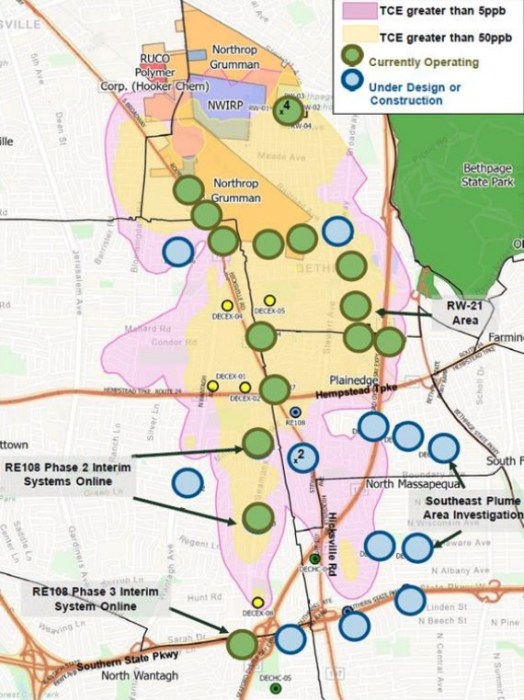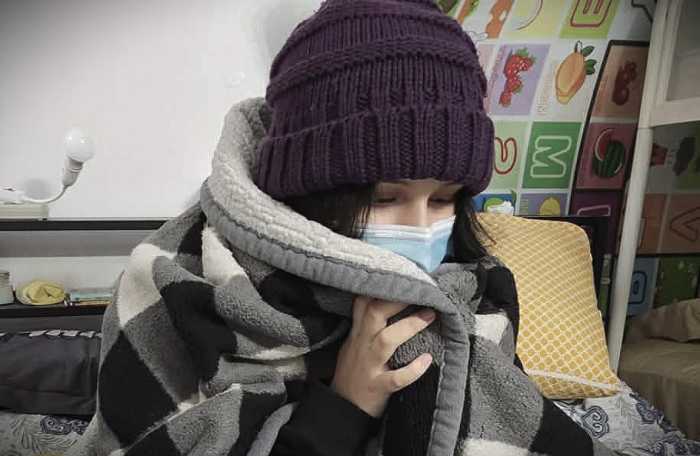School for children with Down syndrome, autism spectrum disorders and other disabilities celebrates new technology and facilities
We often think of kindergarten as a time for children to do little more than fill in coloring books with some friends and build castles with blocks, but the fact is, it can be tough to be a kindergartner these days. Many children experience some culture shock when they go from the relatively carefree world of pre-school (or time at home with Mom and Dad) to kindergarten, and that can lead to bouts of crying and other behavioral problems. Most children adapt, but if kindergarten can be so difficult for the average child, what problems does it present for children with disabilities?
“The expectations for kindergarten have grown exponentially in the past ten years,” said Michael Smith, executive director of ACDS (Association for Children with Down Syndrome/ Lifetime Service for Individuals with Special Needs.) “What a child used to be expected to know for first grade they are now expected to know for kindergarten, so we have really had to ramp up our training and preparation so our kids can succeed when they get to kindergarten.”
The primary goal of ACDS is to prepare children with disabilities to attend kindergarten and beyond in their home districts, preferably in integrated classrooms. The school, located on Fern Place in Plainview, was founded in 1966 by the parents of children with Down syndrome in the community. While the organization’s heritage will always be serving those with Down syndrome (a group that still makes up 45-50 percent of the school’s students) in the last few decades ACDS has gradually opened up to serving children with all kinds of disabilities: autism, developmental disabilities, other genetic disabilities and blindness.
As Smith explains, the very nature of Down syndrome made it feasible for the school to serve other populations. The different kinds of challenges presented by the disorder are so vast, working with a Down syndrome population has trained the ACDS staff to deal with all sorts of issues.
Capacity for speech varies greatly among children with Down syndrome, with some who love to talk and others who remain non-verbal at 5 years old. Seventy-five percent have hearing issues, approximately half have vision issues, and other common issues involve muscle tone, ambulation and sensory integration. About 18-20 percent of children born with Down syndrome are also autistic. “So we see almost any kind of issue you can imagine,” said Smith.
After slowly integrating more children with other disabilities into the school population over the course of approximately 15 years, in 2004 ACDS began to fill their half-empty facility with children who did not have Down syndrome. While there was some concern among the parents of children with Down syndrome that the school was losing its focus (a concern Smith says the school has worked very hard to ameliorate), now the school is not only full, but serving as a resource to children with all kinds of disabilities from all over Long Island.
Hitting The Ground Running
The school’s two major programs are Early Intervention and Preschool. Early Intervention starts from a diagnosis, with therapists and educators coming to serve the children at their homes from babyhood. At 18-20 months, the children come to the school, where they play with other children while still receiving professional service. Contrary to what used to be a common belief, Smith explains, autistic children can be social as well and get a lot out of interacting with their peers.
Sometimes, Early Intervention starts not from the time of diagnosis, but even prior to birth; mothers pregnant with children with Down syndrome often work with ACDS before their baby is born, whether or not their child goes on to attend the school.
At the age of 3, the children transition to the Preschool program, which is funded by the state education department (EI is funded by the department of health.) At this point, the preparation for elementary school really starts, with all children learning a standard pre-kindergarten curriculum, developed by Principal Cecilia Barry M.S., P.D., SBL/SDL.
Tackling this curriculum can be a challenge for some students, but in some cases, children from ACDS come into kindergarten more acclimated to classroom life than their peers. One ACDS mother proudly tells of her son’s first day of kindergarten, when he was the only child in class who immediately knew what to do with his coat and lunchbox as soon as he walked into the classroom. For children who may struggle with some aspects of school life, feeling comfortable in their environment can count for a lot, and that feeling of comfort is one of the main things ACDS seeks to provide.
The preschool program includes four integrated classrooms for children 3-5, which are half populated by typical children and half with special needs. The integrated classes are one of the program’s greatest successes: when the program started, there were no typical children available, since parents did not see the value of having their children learn side-by-side with children who were disabled. Now, not only are the classes well populated, but there’s even a waiting list to get into the integrated classrooms. The typical children come from the on-site daycare program, well-used by the POB community.
Children who are disabled who start out learning alongside their typical classmates from a young age are that much better prepared to stay in integrated classes throughout their school careers, if not for the academic subjects than for enrichment activities like art and music. While some children with more severe disabilities or multiple disabilities do go on to self-contained settings, the integrated classes make it that much easier for most ACDS children to eventually attend their local elementary schools.
Just as importantly, the kids learn well together. “If I show you one of those classes, I dare you to identify which of the kids are typical and which are the ones with the disabilities,” said Smith.
Using New Technologies
While the halls of the Fern Place School are filled with colorful illustrations and look just like any other preschool, a closer look reveals the extra services ACDS provides. In addition to a regular gym, the school now has a sensory gym specifically for children with sensory integration issues, which was built two years ago with federal stimulus funds. The goal of the facility is to engage all of the children’s senses with different exercises. In addition, the vast majority of the classrooms include a special speech cubicle, so speech teachers can work individually with the children on speech without removing them from the classroom.
Rather than following a cookie-cutter model, the classrooms are also individualized; three or four classrooms per year are modified as the school population changes. Children in wheelchairs or walkers require different classroom set-ups than other children, and the very structure of the rooms changes over time to accommodate whatever features are needed most.
One of the most recent changes at ACDS involves using iPads to help children with speech issues communicate. Thanks to the PTA, one family who wished to remain anonymous, and the Nassau Suffolk Chapter of the Autism Society of America, ACDS now has 11 iPads, which are primarily used by the speech pathologists. Ideally, ACDS would like all 15 pre-school teachers to have an iPad. According to ACDS staff, being able to communicate via the iPads not only helps some children get their point across, but lessens frustration and behavioral issues as well.
“With the iPad, children are motivated to focus and pay attention for a longer period of time. Many children with Down syndrome and autism spectrum disorders are visual learners, so the iPad appeals to their learning style,” noted Barry. “It’s a great opportunity.”
As far as the criticism that relying on the iPad could become a crutch for some students, Smith is unmoved, saying that those who view the technology with suspicion would likely change their tune if they could see a child’s face light up with joy because he or she is finally able to communicate.
“I don’t know if it’s much different from the way we all learned written language 10,000 years ago: it’s a tool,” said Smith.
However, there may be a problem when the ACDS kids reach kindergarten, since many school districts on Long Island do not use iPads yet. For now, the staff at ACDS is trying to get the use of iPads written into the children’s IEPs to ensure that access to the technology won’t be suddenly taken away from children who thrive with it.
Closing The Gap
Despite the focus on kindergarten preparation, ACDS is not only a school: the organization also runs seven adult group homes, populated by adults who were once ACDS students in their youth. Approximately 80 percent of the residents have Down syndrome. The adult homes, in addition to other services for children and adults of all ages, are representative of the organization’s desire to provide lifetime service, not just education for the under-5 set. Other programs offered include the 5Plus Recreational and Respite Program for children, teens and adults, and Medicaid service coordination.
However, ACDS may have difficulty continuing to provide all of these services in the future. While approximately 90 percent of the organization’s funding comes from the government, ACDS staff expects the gap between government funds and operating costs to continue to rise. In order to keep their programs running, ACDS holds several annual fundraisers including a golf outing in May and a dinner dance in October. The golf outing, which just took place on May 10 this year, typically raises approximately $75,000.
Plenty of fundraising takes place on a smaller scale, with about a dozen smaller fundraisers, including a PTA-organized fashion show, arranged by third parties per year. Vincent Santo, director of development and corporate relations and Laurie Schaefer, development associate, point out that some of the most impressive donations are the smallest: one teenager saves her babysitting money for ACDS, donating $3,000 a year. Several nearby Red Mango locations keep out a donation jar with information about ACDS, leading to a $1,000 donation from the yogurt shop every other month or so. “We really, particularly value that kind of support,” said Santo.
Schafer started fundraising for ACDS while her daughter was attending the school, and eventually made the transition to working for the organization. Though trained as a pharmacist, Schafer switched fields because of the difference that ACDS made in her daughter’s life.
“There is no other school, not just on Long Island, but in the United States, who has the experience of helping children and adults with Down syndrome,” said Schafer, going on to say that one of her friends moved to Long Island from out of state just so her child could attend ACDS.
Schafer is far from the only parent who felt the need to give back; just recently on April 20, ACDS held a grand opening for a renovated playground and a small paved track, made possible by a $40,000 donation from the Cardoza family.
“There is a special spot in my heart for ACDS, for what they did for my son and my family,” said Raymond Cardoza, who met with Santo to determine what was most needed at ACDS. The renovated playground is specifically designed for children under 5 years old, which the original playground was not.
“What was there wasn’t suitable for those under 5 years old who are developmentally challenged. Some of the equipment was too high for them,” said Cardoza.
With consistent fundraising efforts and the aid of generous families like the Cardozas, ACDS hopes they can continue to serve those with disabilities on Long Island. It can be hard work, but according to Santo, it’s more than worth it. “If you’re having a bad day, all you need to do is walk out in the hallway and see the kids and understand that we make a difference in lives,” he said.
“That is not a cliché: we make a difference in lives.”


































